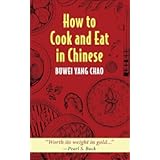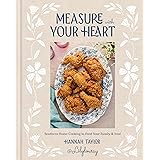The pristine image of cows grazing peacefully in lush green pastures is a deeply ingrained symbol of dairy farming for many. This idyllic vision is often reinforced by the packaging we see in our grocery stores, depicting happy, healthy animals freely roaming. However, as the video above reveals, the reality of the conventional dairy industry often paints a very different picture, exposing secrets the milk industry may prefer to keep hidden from the average consumer. For those seeking clarity on their food sources and considering a plant-based lifestyle, understanding these practices is a crucial first step.
The Hidden Realities of Modern Milk Production
In stark contrast to the pastoral scenes we envision, industrial dairy farms frequently house cows in conditions far removed from nature’s bounty. The video highlighted a stark example: a shed where as many as 30 cows were packed tightly side by side. Each animal was often confined by a mere three-foot rope, severely restricting their movement.
This reality means that these intelligent, sentient beings often lack the ability to even turn around or engage in natural behaviors like grazing. Such confinement is not only physically restrictive but also emotionally taxing, creating an environment that prioritizes output over animal welfare. The discrepancy between marketing imagery and actual farm conditions is significant, prompting many to question the ethics behind their daily glass of milk.
Broken Bonds: The Calf Separation Process
One of the most emotionally impactful practices in the conventional dairy industry is the separation of a mother cow from her calf. As the video briefly touched upon, this painful event typically occurs very shortly after birth. Newborn calves are often removed within hours or days of their arrival, a critical period when bonding naturally occurs.
Studies on animal behavior and maternal instincts show that mother cows form strong bonds with their offspring, similar to human mothers. When these bonds are abruptly severed, cows exhibit clear signs of distress, including prolonged bellowing and agitation. This separation is primarily done to ensure that the milk intended for the calf can be collected for human consumption, a practice that highlights the commercial pressures within the industry.
The Role of Hormones in Sustained Lactation
For cows to continue producing milk long after their calves are taken away, and beyond what would naturally occur, interventions are often necessary. The video revealed the daily application of hormone injections as a common practice. These injections are designed to stimulate and prolong lactation, ensuring a consistent and abundant milk supply year-round, regardless of the cow’s natural reproductive cycle.
While specific types of hormones vary, the objective remains the same: to maximize milk yield. This intense demand on a cow’s body, coupled with the frequent “morning-evening” injections mentioned, can contribute to significant physiological stress. Consumers often express concerns about the potential implications of these practices, both for the animals and for the quality of the milk produced, leading many to seek alternatives free from such treatments.
Ancient Wisdom vs. Modern Dairy: A Stark Difference
The comparison made in the video between the milk praised in ancient texts and the liquid we consume today is profound. Historically, milk was often sourced from cows that grazed freely, were part of smaller, more localized herds, and whose calves were allowed to nurse for longer periods. The focus was on natural cycles and a more symbiotic relationship between humans and animals.
Today, the landscape of dairy has dramatically shifted. Large-scale industrial operations prioritize efficiency and volume, often at the expense of traditional, ethical, and natural farming methods. This fundamental change means that the nutritional profile, ethical footprint, and even the emotional energy associated with modern conventional milk are vastly different from what our ancestors consumed. Many consumers now recognize this “poles apart” distinction, driving them to reconsider their choices.
Exploring a Plant-Based Lifestyle for Health and Ethics
Given the revelations about conventional milk production, it’s understandable why a growing number of people are moving towards a plant-based lifestyle. This shift isn’t just about animal welfare; it also encompasses significant health benefits and environmental considerations. Plant-based diets are frequently associated with reduced risks of heart disease, type 2 diabetes, and certain cancers, supported by numerous nutritional studies.
Furthermore, the ecological impact of industrial dairy farming, including greenhouse gas emissions and water usage, is a major concern for environmentally conscious individuals. Thankfully, the market now offers a wide array of delicious and nutritious plant-based alternatives to conventional milk. Options like almond milk, oat milk, soy milk, and rice milk provide excellent versatility for cooking, baking, and enjoying in beverages, all while aligning with ethical and sustainable values. The journey away from these milk industry secrets towards a plant-based path offers a compelling alternative for a healthier planet and healthier individuals.











